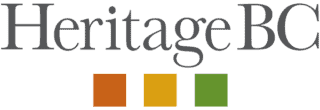- Heritage 101
- Advocacy
- Accessibility for Historic Places
- Climate & Sustainability
- Cultural Maps
- Heritage Place Conservation
- Heritage Policy & Legislation
- Homeowners
- Intangible Cultural Heritage
- Reconciliation
- Indigenous Cultural Heritage
- Setting the Bar: A Reconciliation Guide for Heritage
- 1. Heritage and Reconciliation Pledge
- 2. Acknowledging Land and People
- 3. Celebrating Days of Recognition and Commemoration
- 4. With a Commitment to Learn
- 5. Committing to Strategic Organizational Diversity
- 6. Mission-Making Room for Reconciliation
- 7. Possession, Interpretation, Repatriation and Cultural Care
- 8. Shared Decision Making
- 9. Statements of Significance and other heritage planning documents
- 10. Heritage Conservation Tools, Local Government Act
- Racism: Do Not Let the Forgetting Prevail
- Taking Action: resources for diversity and inclusion
- Webinars On-Demand
Heritage Designation: Sample Designation Bylaw
 With minor alterations, this sample bylaw was prepared by Lidstone, Young, Anderson for Heritage Conservation: A Technical Manual for Local Governments, 1995.)
With minor alterations, this sample bylaw was prepared by Lidstone, Young, Anderson for Heritage Conservation: A Technical Manual for Local Governments, 1995.)
Whereas the Council considers that the properties described in the Schedule to this Bylaw have heritage value or heritage character or that their designation is desirable for conservation of protected heritage property,
The Council of the ________, in open meeting assembled, enacts as follows:
Title
- This bylaw may be cited as “_______ Heritage Designation Bylaw No. _____”.
Interpretation
- In this Bylaw, the terms “heritage value” and “heritage character” and any grammatical form of the term “alter” has the meaning corresponding to the meaning given to them in the Local Government Act, [RSBC 2015] Chapter 1, Part 15 — Heritage Conservation.
Designation
- The properties described by civic address and legal description is Schedule A attached to and forming part of this Bylaw are designated as protected under Division 5 – Continuing Protection of the Local Government Act, [RSBC 2015] Chapter 1.
Exemptions from Permit Requirement
- The following types of alterations may be made to the properties described in Schedule A without the owner obtaining a heritage alteration permit:
a) In respect of property described in Part One of Schedule A, being property having heritage value or heritage character, interior alterations that do not affect any interior feature or fixture referred to in Schedule A and that do not alter the exterior appearance of the building and normal repair and maintenance so long as the maintenance is carried out in accordance with the Heritage Maintenance Standards Bylaw No. _____;
b) In respect of property described in Part Two of Schedule A, being property the designation of which is necessary or desirable for the conservation of protected heritage property, all interior and exterior alterations, except that no exterior alteration is authorized under this section that involves
i. The extension of the building into the front year or either of the side yards as those terms are defined in Zoning Bylaw No. _____;
ii. The alteration of the shape of the roof of the building;
iii. The alteration of the size, shape, glazing pattern or material composition of any window or door in the building; or
iv. The application of vinyl or aluminum siding or soffits, the application of stucco, or the installation of clay, concrete or metal tile roofing.
- For purposes of section 2(a), “normal repair” means the replacement of elements of the structure or finishing materials of a building with components that are equivalent to those being replaced in material composition, dimensions and quality, except where the elements or materials being replaced are not original to the building in which case a heritage alteration permit is required.
Financial Assistance
- Where an owner of property described in part Once of Schedule A is required by terms of a heritage alteration permit or by Heritage Maintenance Standards Bylaw No. _____ to construct alterations or maintain the property in a particular manner or using particular materials, and the cost of the construction or maintenance is greater than it would be if the owner were not subject to the permit or the Bylaw as the case may be, the owner may be application in writing apply to the Council for financial assistance.
- An application for financial assistance may be made under Section 6 only one every _____ years, and the Council must, in considering such an application, consider the report of the Chief Building Inspector as to the additional cost of construction or maintenance in each particular case that is attributable to the terms of the heritage alteration permit or Heritage Maintenance Standards Bylaw No. _____.
- Nothing in this Bylaw obligates the Council to exercise its discretion to provide financial assistance under Local Government Act, [RSBC 2015] Chapter 1, Part 15 — Heritage Conservation in any way.
(signatures)
SCHEDULE A
Part One: Properties with Heritage Value or Character
| Civic Address Features | Legal Description | Designated |
| Street address | (specific features that have heritage value of character) |
Part Two: Properties in the Vicinity of Property with Heritage Value or Character
| Civic Address Features | Legal Description | Designated |
| Street address | (specific features that have heritage value of character) |
